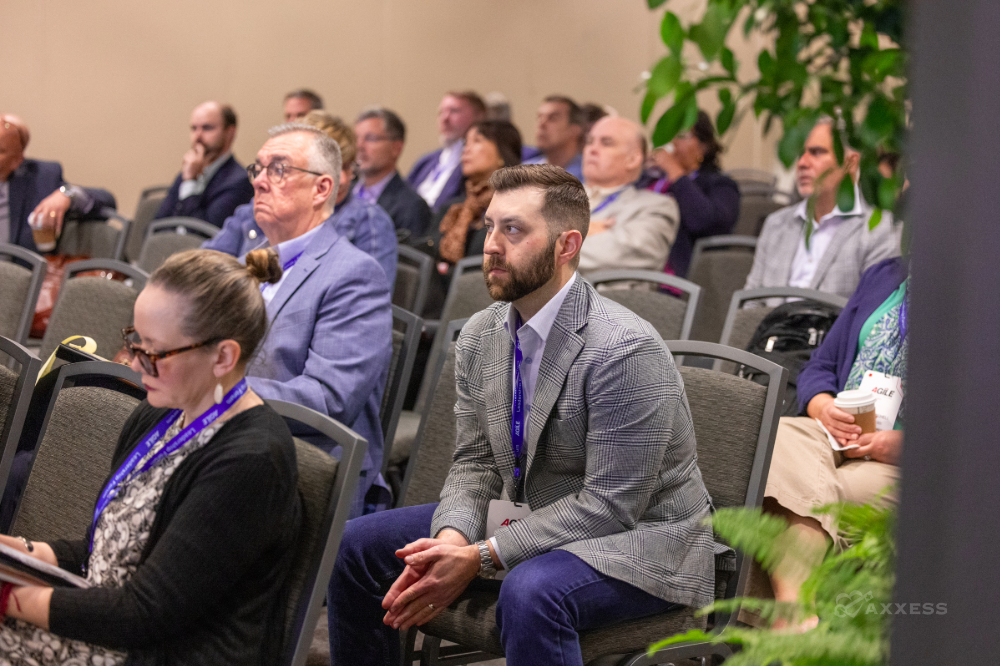
The future of hospice care payment models is currently a significant focus within the hospice industry. In an education session at the 2024 Axxess Growth, Innovation and Leadership Experience (AGILE), Alisa Gerke, Executive Director of Unity Hospice, and Aaron Little, CPA, Managing Partner at Forvis, shared their perspectives on hospice and Medicare Advantage and discussed strategies for creating effective partnerships with Medicare Advantage Organizations (MAOs).
The Future of Hospice Medicare Advantage
The pair opened the session with a discussion about what the future of hospice payment methods may look like since the Centers for Medicare and Medicaid Services (CMS) announced that the hospice benefit of the Value-Based Insurance Design (VBID) model would conclude on December 31, 2024.
Little offered his perspective on the matter, stating that he feels that CMS will likely use the data from the last few years to tweak the plan, noting that Medicare Advantage likely isn’t going way entirely.
“When you know that half the Medicare beneficiaries, literally half, are on a Medicare Advantage plan and you know that’s by design, that’s CMS’ design to push more over to the Medicare Advantage side,” Little said. “You have to know that it’s eventually going to come back around in some way, shape or form.”
The pair also explored whether integrating Medicare Advantage with hospice care has helped to enhance the coordination of fragmented care delivery, detailing that there isn’t enough data to definitively say whether it has or not.
“We’re so new into it and we really haven’t unfortunately, and I don’t know how much we will get, if the data is able to show what were the outcomes of those lives that were covered,” Gerke said.
“We definitely are not seeing that these additional services that are supposed to be offered in some way, shape or form are definitely not being included, not being offered, not being spoken to,” Gerke added. “It does go back to that fragmentation of where do they get those services from, where do they get that support from.”
Gerke recommended that organizations brace for impending changes by designating a point person to monitor developments and updates. She also urged them to concentrate on improving care delivery and to accept the uncertainty of operating in a transitional phase until more definitive guidance is provided.
“You know we’re going to be living in the blur, but in the meantime, still take care of those patients and anticipate changes,” Gerke said.
Partnering With MAOs
While offering insights into the current status of the hospice industry, the pair also highlighted key factors to consider when forming partnerships with MAOs.
Gerke urged leaders to prioritize data analysis from both their own organization and potential partners. Understanding and presenting this data effectively can showcase the organization’s value to prospective partners. Studying the partner’s data also helps leaders grasp what the partner seeks in a collaboration, facilitating a more informed and strategic approach to partnerships.
“We put a lot of time and energy into ensuring that we had clean data going in, so we could analyze the data coming out to be able to kind of tell our story,” Gerke said. “You really want to learn about their data and what their pain points are and that’s where you can kind of marry that information.”
Organizations were also encouraged to develop a value proposition to further show what they can bring to a partnership.
Little advised leaders to consider both quality and cost when preparing for partnerships, emphasizing that cost reduction is a primary concern for payers.
“What is it about that quality that’s making a difference in controlling costs?” Little asked. “We know that at a very high level, no matter what segment of healthcare, in the U.S. healthcare costs are high. So, everyone’s motivated to try to bring the cost down, but we also need to make sure we’ve got some level of quality there.”
The session concluded with an emphasis on staff involvement. The pair encouraged leaders to ensure that staff are included in the decision-making process and have a clear understanding of the reasons behind certain decisions.
“If a staff member isn’t understanding the ‘why’ behind something, then they aren’t going to be able to get behind it,” Gerke said.
With more than 350 attendees, more than 50 sponsors and countless connections made, AGILE was a massive success for everyone. Check out the recap video and mark your calendar for AGILE 2025, May 5-7, in Dallas.
